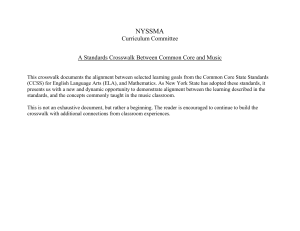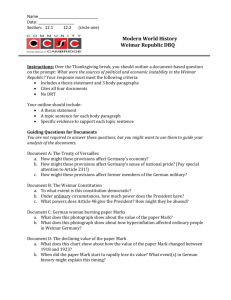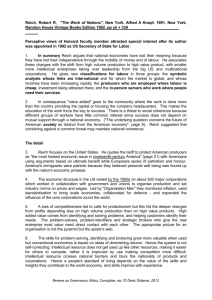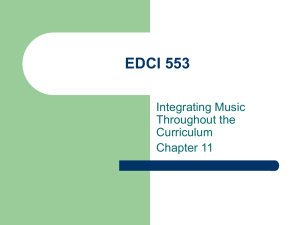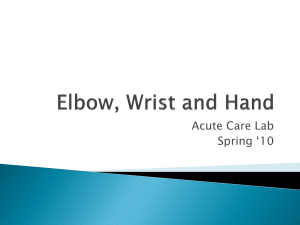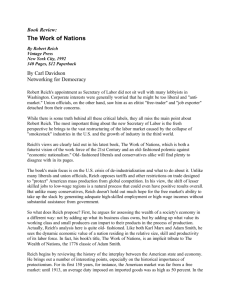File
advertisement
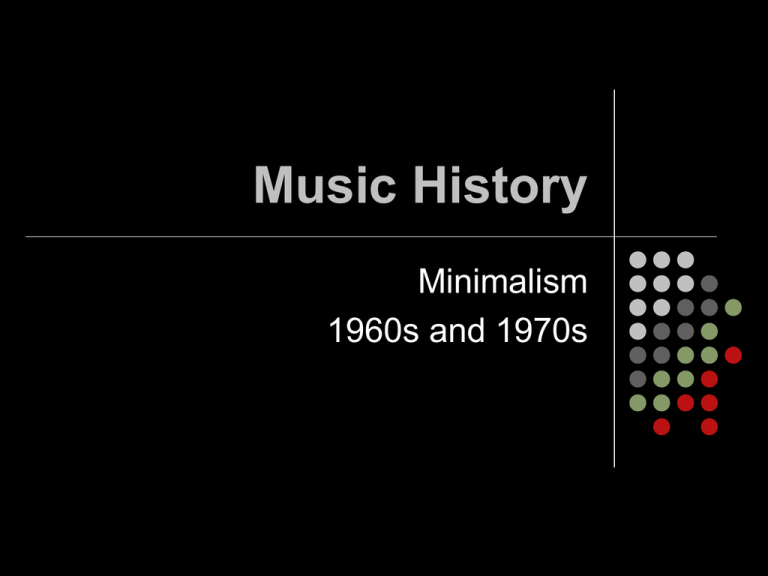
Music History Minimalism 1960s and 1970s Minimalism Music written using a very small amount of material that is actually used by the composers. Characterized by: Repetitive figures Static harmonies Precise intonation Began by La Monte Young (b. 1934) Influenced by John Cage, African, Indian and Balinese music and the want to steer clear of a specific form Also called: “trance music”, “pulse music”, “process music”, or “systemic music” Steve Reich (b. 1936) One of the leading composers of minimalism Studied jazz and drumming, African music and Balinese gamelan music. Began to work with tape loops and became captivated by the possibilities of repetition and phase shifting. These repetitive figures and patterns led him to minimalism and a considerably reduced harmonic vocabulary. 1970s brought Reich back to writing melodic material and abandoned electronic music to write for conventional instruments. Clapping Music - 1972 Steve Reich Reich wanted to “create a piece of music that needed no instruments beyond the human body”. One performer claps a basic rhythm of 12 eighth notes in length for the entire piece. The other claps the same pattern, but every 12 bars he ‘misses’ the 12th eighth note, so that she or he shifts over by a quaver changing the rhythm and how it fits with the first performer’s “base” rhythm. The two performers continue this until the second performer has shifted 12 eighth notes and is hence playing the pattern in unison with the first performer again (as at the beginning), some 144 bars later. “Come Out” (1966) Steve Reich “I had to open the bruise up and let some of the bruise blood come out to show them” Daniel Hamm Reich found this brief sentence from 10 hours of taped interviews. He was searching for speech melody. Uses phase shifting, in which Tape 1 and Tape 2: Both tapes contain the same material, and to begin they are set up to be played in unison Tape 2 is gradually moved out of phase, so that it falls farther and farther behind Tape 1 13:10 minutes long Philip Glass (b. 1937) Born in Maryland, USA and studied analysis in Paris Traveled to India and was greatly influenced by the music is experienced there. Expanded basic melodic units through additive rhythmic process – Add and Repeat. He lengthens or shortens it by the addition or deletion of a rhythmic unit. His pieces tend to be harmonically static because of his use of parallel motion. Wrote operas, solo pieces, chamber works, symphonies, orchestral works, vocal pieces, and music for dance, film and theatre. Violin Concerto – 2nd movement Philip Glass Composition took 4 months to finish and premiered in 1987 Written in a neo-Baroque style It is a three movement structure written in the key of C minor and D Very dramatic and creates tension with its active rhythms 2nd movement is actually supposed to be the ‘slow’ movement, however the busy rhythms have changed that 8:32 minutes long Terry Riley (b. 1935) Born in California, USA Studied in India and traveled throughout Europe, taking his musical ideas from his experiences “All Night Concerts” which improved his improvisational techniques. These performances included him, a vacuum cleaner and a saxophone tape. Riley’s use of the ostinato stems from his ability to improvise The work called “In C” is one of the best known minimalist works. “In C” (1964) Terry Riley Improvises on melodic figures of various lengths The piano part is not notated, but is required to play octave quavers on the two top Cs of the keyboard, creating a background for the other players. The rest of the ensemble has 53 motives to play consecutively in sync with the Cs of the keyboard. The player decides when to move, how long to play the motive, and how many times to repeat. And are encouraged to drop out and listen occasionally. Performances usually last anywhere from 45 to 90 minutes. Important Terms Add and Repeat - expansion of musical ideas through the addition and repetition of rhythms or melodic material. Minimalism - a style of music that is created through the simplification of rhythms, patterns and harmonies creating a ‘trance-like’ effect. Ostinato - a repeated musical pattern; rhythmic, a portion of a tune or a complete melody. Phase Shifting - placing parts out of synchronization Parallel motion - harmonic direction of a musical passage in which the voice of two parts progresses with the interval remaining the same. Usually found with octaves and fifths.

